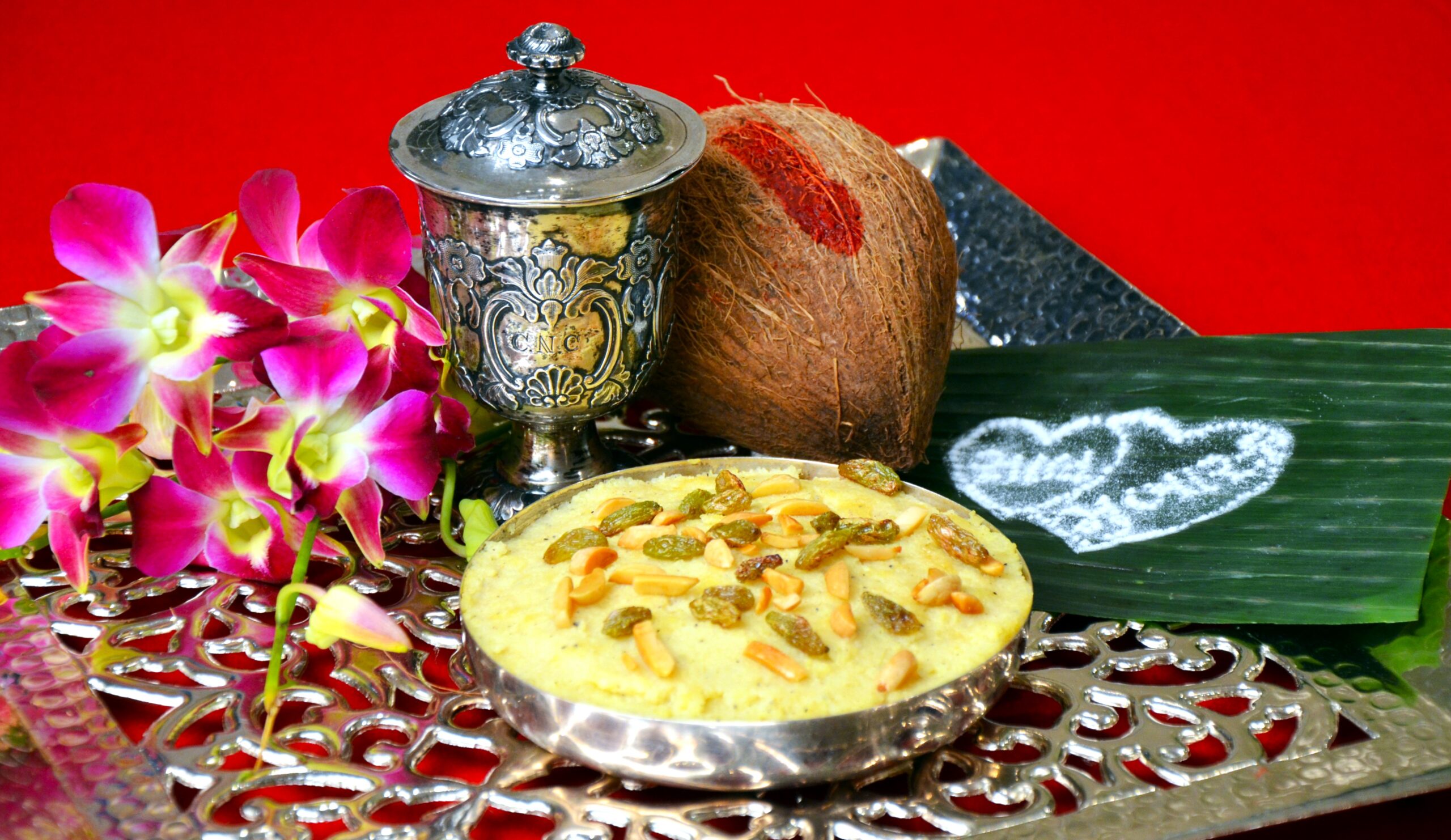
Niloufer Mavalvala’s recipe for ravo is an homage to her mother, Shireen. Reminiscing fondly about her mother, Niloufer shares, “She loved to cook. Her cakes and ravo,outstandingly delicious,are just hard to recreate. She had the gift of a magical touch!” Food is central to every Parsi occasion, be it a wedding feast or a sombre gathering. “Parsis have a recipe for every occasion, and an occasion for every recipe!”, she says. “While we eat pretty much everything throughout the year, ‘life’ is a celebration in our culture. We like to traditionally serve certain foods on these occasions.”
Ravo is one such example. It is a semolina pudding flavoured with cardamom and vanilla, garnished with kishmish and slivers of fried almonds. Some add nutmeg to it, while others prefer cashews or black currants. Niloufer’s cousin would even add a pinch of saffron. Growing up in Karachi, Niloufer has always eaten ravo prepared with eggs. However, when her aunt from Mumbai would visit, she would make it without eggs. “It was a treat, but it never became part of our regular routine,” asserts Niloufer .
Excluding herself and her brother, Niloufer’s family still frowns upon the idea of calling an eggless ravo, a “ravo”, while relatives living elsewhere have grown up eating the eggless version and prefer to keep it that way. She maintains that this distinction in recipes, however little, is shaped by one’s neighbours, environment, and habits; it is these little details that indicate how cultural identities are tied to food.
With Parsi New Year around the corner, it is a great time to recreate this recipe!
| Salted butter | 125 grams or 1½ cup approx. |
|---|---|
| Coarse rava (semolina) | 125 grams or 1½ cup approx. |
| Sugar | 140 grams or â…” cup |
| Eggs | 3 |
| Full-fat milk | 2 cups |
| Vanilla extract | 1 teaspoon |
| Salt | a pinch |
| Cardamom powder | 1 teaspoon |
| Nutmeg, freshly grated | 1½ teaspoon (optional) |
For the Garnish:
| Oil | 1 tablespoon |
|---|---|
| Almonds, slivered | 50 grams or â…“ cup approx. |
| Kishmish (Golden raisin) | 50 grams or â…“ cup approx. |
What You Will Need
Mixing bowls, tall-edged pan, whisk, sieve
Instructions
For the garnish, heat oil in a pan and lightly fry the almonds till golden, then remove. Add the kishmish and fry for a few seconds till they slightly puff up. Keep them both aside on a paper towel to absorb any excess oil.
In a pan, melt the butter on a low flame.
Roast the semolina in the melted butter for a few minutes until it is aromatic and turns pale in colour.
Stir in the sugar, and then remove from the flame.
In a bowl, lightly beat the eggs and add some milk. Reserve about 1½ cup of milk aside to adjust the consistency later.
Pass the egg mixture through a sieve before slowly adding it to the pan. Take care that the pan is not too hot,it might end up scrambling the egg mixture.
Pour the remaining milk into the pan, return to the heat, and cook on a medium flame, stirring constantly until it comes to a soft boil.
Add the vanilla, salt, and cardamom powder.
Add some more milk if the consistency of the ravo is too thick. Mix well.
Remove the ravo from the flame and pour into serving bowls. Garnish with the almond slivers and raisins. Serve warm.
Tips
- Warm the milk slightly before mixing into the beaten eggs. This will help temper the mixture and prevent the egg from splitting when added to the pan.
- Sieving is not crucial, but it ensures there are no lumps or egg residue left.
- The ravo will thicken as it cools, so its consistency can be adjusted accordingly.
- Alternative garnishes include charoli or cashews.
- A pinch of saffron can be added to the milk along with the vanilla and cardamom, for a dash of flavour and colour too.
Born and raised in Karachi, Niloufer Mavalvala (@nilouferskitchen) is a cookbook author and organises culinary demonstrations in Canada. She promotes the exploration and documentation of Parsi culinary traditions and has written four cookbooks that depict Parsi culture, customs, and idiosyncrasies through food. The Route to Parsi Cooking is her latest book, and available to purchase online and in bookstores in Mumbai and New Delhi. Find out more about her books through her website: http://www.nilouferskitchen.com
You must be logged in to rate this recipe.

Sign in with email

